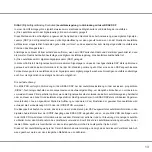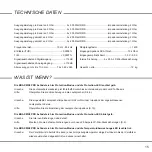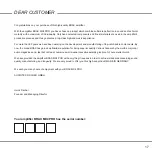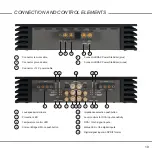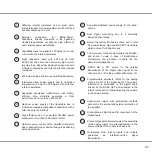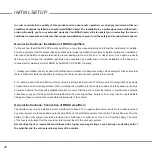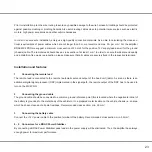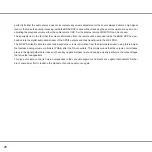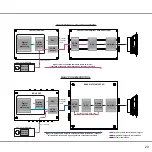
27
If only one single stereo digital input signal is available, then the inputs A / B shall be used. In this case you can route this
signal to the channels C / D by changing the position of the “SPDIF AB to CD“ switch inside the amplifier.
To do so, you have to open the amplifier by removing the bottom plate (tightened by 14 screws) and move the switch
“ SPDIF AB to CD“ to the “ON“ position. The switch is located near the “Made in Germany” logo (see page 20, topic 17).
Keep in mind that the fader and balance settings of your head unit will have an effect on both channel pairs A / B and C / D.
Important:
Take care that the digital audio signal of your source is volume-controlled – otherwise this will lead to full level
on the outputs of the MX4 PRO. This may cause severe damage to your speakers. Therefore we strongly recommend to
solely use volume-controlled digital sources!
Note:
The MX4 PRO can only handle uncompressed digital stereo signals in PCM format and no MP3- or Dolby-coded
digital audio stream!
DiSAC (Digital Signal Analog Controlled) volume control in combination with the BRAX DSP
In a car audio system there are typically two possibilities to control the playback volume.
a) The volume will be adjusted in the signal source (e.g. the car radio / head unit):
This is the predominant method, but it has a disadvantage as soon as there is an additional digital signal processor in the
audio path. The full resolution of the DSP can only be exploited when the volume of the source is set to full-scale output.
Otherwise audio bits get “lost” so that at very low volume levels the sound lacks of precision. But this loss can also happen
if no DSP is in the signal path between head unit and amplifier as most of the radios today incorporate a digital volume
control which also has a negative effect on the signal resolution at low volume levels.
b) The volume will be adjusted in the digital signal processor (DSP):
In this case the signal source delivers a full-scale signal so that a DSP in the signal path can operate under best possible
conditions without truncating any bits, e.g. during AD conversion process. A remote control connected to the DSP will then
be responsible for adjusting the volume inside the signal processor in the digital domain, but this also has a slight impact
on sound quality.
The perfect solution:
The MX4 PRO in combination with the BRAX DSP follows a different, yet the most consequent and extensive approach in
order to avoid any degradation of sound quality. Audiotec Fischers exclusive and proprietary “DiSAC” technology operates

